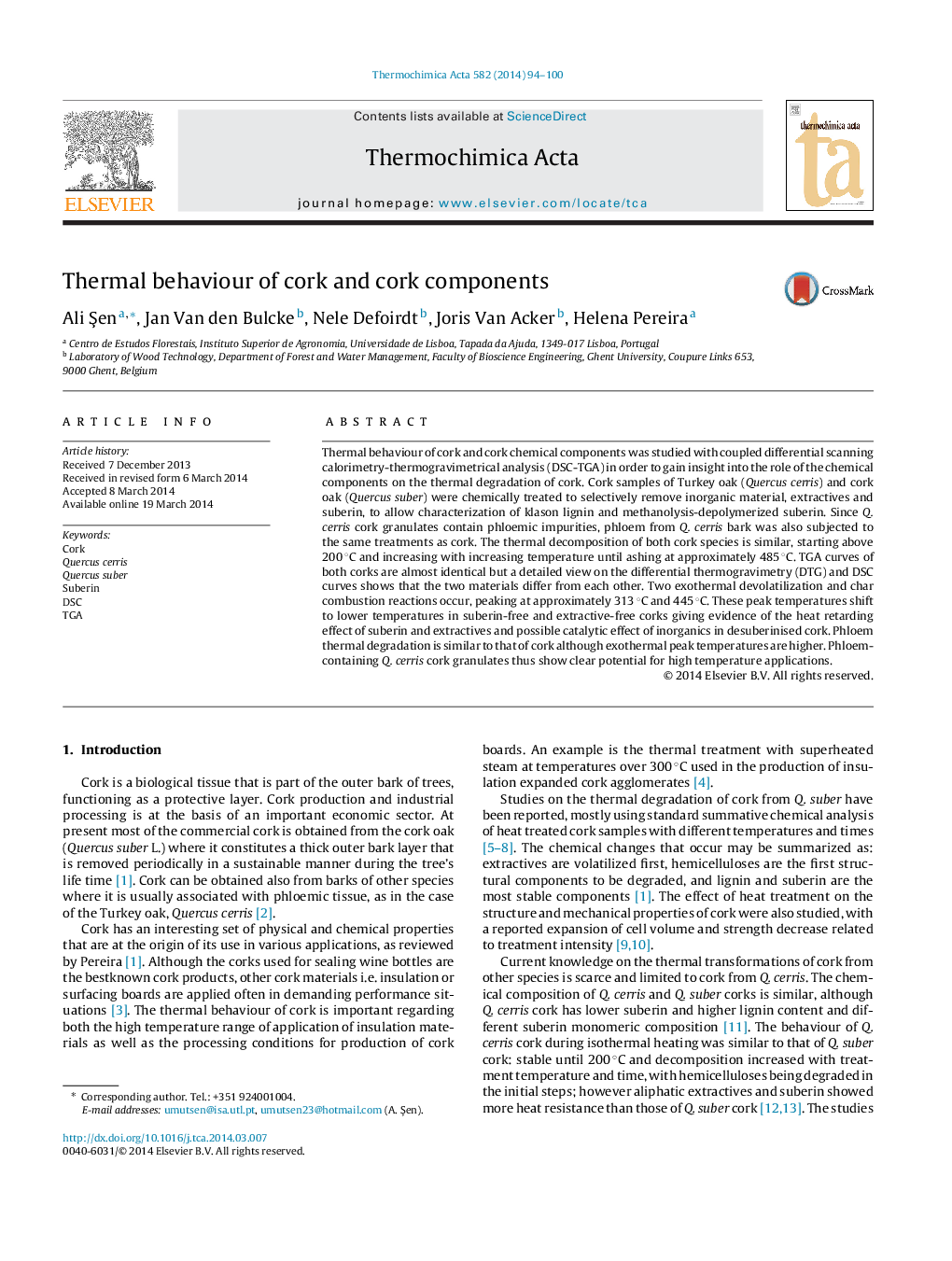| کد مقاله | کد نشریه | سال انتشار | مقاله انگلیسی | نسخه تمام متن |
|---|---|---|---|---|
| 673410 | 1459502 | 2014 | 7 صفحه PDF | دانلود رایگان |
• Thermal decomposition of corks from Quercus cerris and Quercus suber is similar.
• Cork undergoes two exothermal reactions at approximately 313 °C and 445 °C.
• Suberin has a key role in the thermal stability of corks.
• Q. cerris cork granulates with phloem remains have potential for insulation.
• Extractives contribute to shielding against heat-induced degradation.
Thermal behaviour of cork and cork chemical components was studied with coupled differential scanning calorimetry-thermogravimetrical analysis (DSC-TGA) in order to gain insight into the role of the chemical components on the thermal degradation of cork. Cork samples of Turkey oak (Quercus cerris) and cork oak (Quercus suber) were chemically treated to selectively remove inorganic material, extractives and suberin, to allow characterization of klason lignin and methanolysis-depolymerized suberin. Since Q. cerris cork granulates contain phloemic impurities, phloem from Q. cerris bark was also subjected to the same treatments as cork. The thermal decomposition of both cork species is similar, starting above 200 °C and increasing with increasing temperature until ashing at approximately 485 °C. TGA curves of both corks are almost identical but a detailed view on the differential thermogravimetry (DTG) and DSC curves shows that the two materials differ from each other. Two exothermal devolatilization and char combustion reactions occur, peaking at approximately 313 °C and 445 °C. These peak temperatures shift to lower temperatures in suberin-free and extractive-free corks giving evidence of the heat retarding effect of suberin and extractives and possible catalytic effect of inorganics in desuberinised cork. Phloem thermal degradation is similar to that of cork although exothermal peak temperatures are higher. Phloem-containing Q. cerris cork granulates thus show clear potential for high temperature applications.
Journal: Thermochimica Acta - Volume 582, 20 April 2014, Pages 94–100
